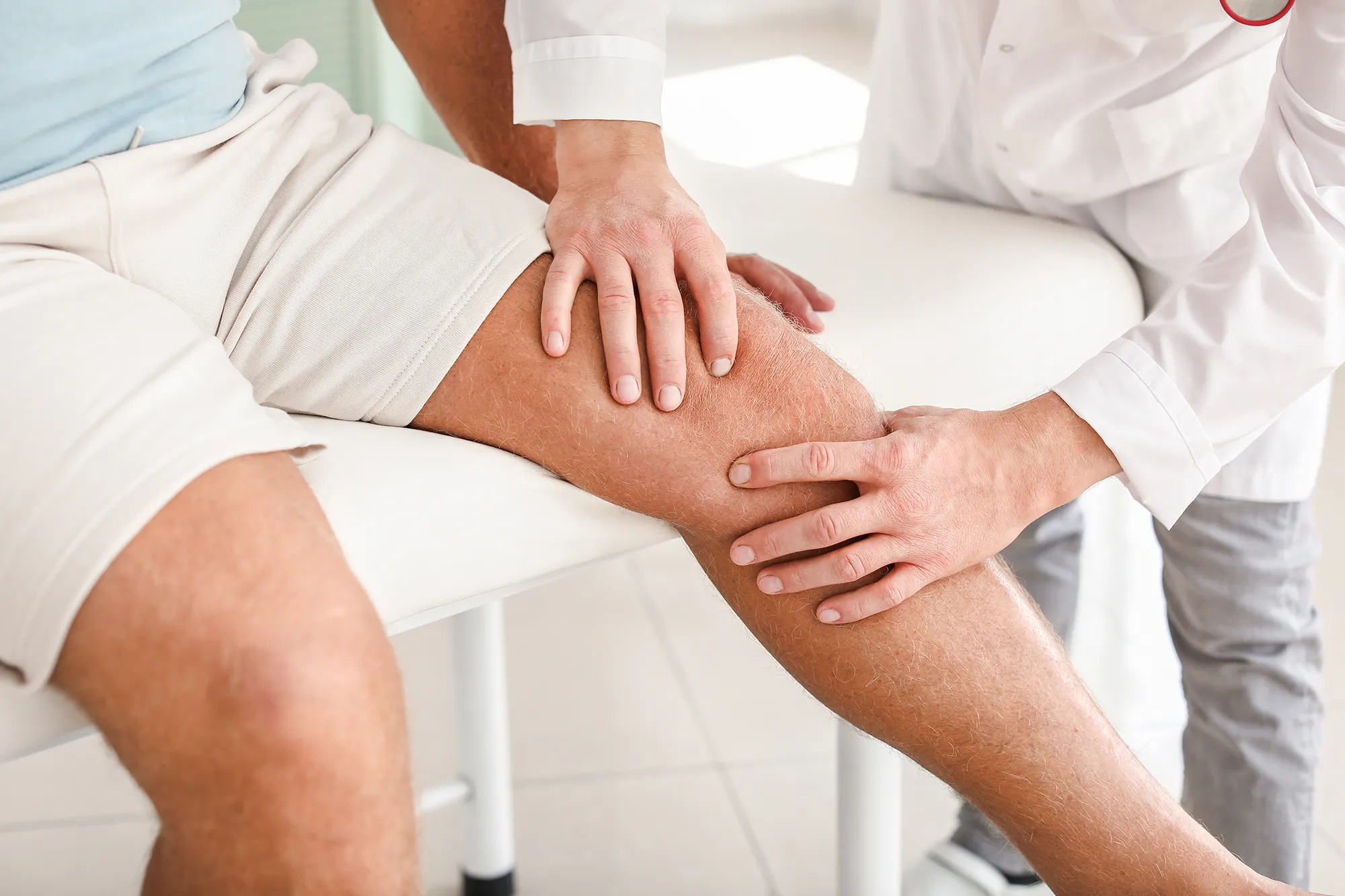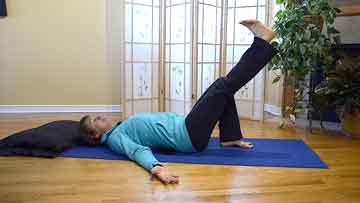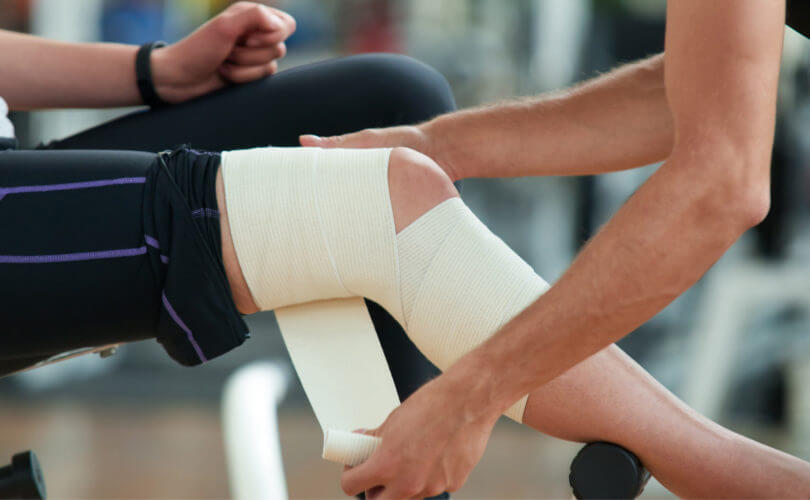Osteoarthritis of the knee, a debilitating and common degenerative joint condition, affects millions of individuals worldwide, causing pain, stiffness, and reduced mobility. While it is often associated with aging, this condition can strike at any age, leading to a diminished quality of life and impacting one’s ability to perform daily activities. Fortunately, there are several treatment options available to manage the symptoms and improve the function of the knee joint, with physical therapy emerging as a powerful ally in the battle against knee osteoarthritis.

In recent years, the role of physical therapy in managing osteoarthritis of the knee has gained recognition and acceptance among healthcare professionals and patients alike. Beyond mere symptomatic relief, physical therapy offers a comprehensive and holistic approach to addressing the underlying causes of knee osteoarthritis. This article delves into the world of physical therapy and its profound impact on patients grappling with this condition. We will explore how physical therapy works, the key principles behind its effectiveness, and the various techniques and strategies employed to alleviate pain and restore mobility in individuals suffering from knee osteoarthritis.
As we embark on this exploration, it becomes evident that physical therapy is not merely a set of exercises or routines but a tailored, patient-centric approach that fosters healing and resilience within the knee joint. By understanding the intricate mechanisms through which physical therapy operates, patients and healthcare providers can better appreciate the potential it holds for mitigating the challenges posed by knee osteoarthritis and promoting a better quality of life.
Join us on this informative journey as we uncover the science and art of physical therapy, shedding light on the transformative power it wields in the realm of knee osteoarthritis management. Whether you are a healthcare professional seeking to deepen your knowledge or an individual seeking relief from the burdens of knee osteoarthritis, this article aims to provide you with the insights and understanding necessary to make informed decisions about incorporating physical therapy into your treatment plan.
The Impact of Osteoarthritis on Knee Function
Before we delve into the intricacies of physical therapy, it’s crucial to understand the profound impact of osteoarthritis on the knee joint. Osteoarthritis is characterized by the gradual breakdown of the cartilage that cushions the bones in the knee joint, causing pain, inflammation, and joint instability. Over time, this condition can lead to a diminished range of motion and reduced muscle strength, making everyday activities, such as walking, climbing stairs, and even standing, a painful ordeal.
The pain and functional limitations imposed by knee osteoarthritis often result in a downward spiral of inactivity. As individuals become more sedentary due to pain, the muscles that support the knee further weaken, exacerbating the problem. This vicious cycle can lead to weight gain and worsening osteoarthritis symptoms, ultimately diminishing an individual’s overall health and well-being.
The Role of Physical Therapy
Physical therapy is a non-invasive and highly effective approach for managing knee osteoarthritis. It operates on the principle that targeted exercises and therapeutic techniques can improve joint function, reduce pain, and enhance the quality of life for those living with this condition. However, physical therapy for knee osteoarthritis is not a one-size-fits-all solution. Instead, it is a personalized, multidimensional treatment plan designed to address each patient’s unique needs, challenges, and goals.
How Physical Therapy Works
- Pain Management: One of the primary objectives of physical therapy is pain management. Through a combination of manual techniques, such as joint mobilization and soft tissue massage, physical therapists help reduce pain and inflammation in the knee. They may also employ modalities like ice or heat therapy to alleviate discomfort and improve the patient’s comfort level.
- Muscle Strengthening: Weak muscles surrounding the knee joint can contribute to the progression of osteoarthritis. Physical therapy involves exercises tailored to strengthen these muscles, improving joint stability and reducing the load on the affected joint. Strengthening the quadriceps, hamstrings, and calf muscles is typically a core component of physical therapy for knee osteoarthritis.
- Range of Motion and Flexibility: Restricted range of motion is a common issue in knee osteoarthritis. Physical therapists use specific stretching exercises and techniques to improve the joint’s flexibility, helping patients regain their ability to perform everyday activities.
- Education: Education plays a significant role in the success of physical therapy. Patients are taught how to manage their condition effectively, including proper body mechanics and posture, and they receive guidance on how to incorporate exercises into their daily routine.
- Patient-Centered Approach: Physical therapy is not a one-off treatment; it’s a journey. Physical therapists work closely with patients to set goals, monitor progress, and adjust the treatment plan as needed. This patient-centered approach ensures that the therapy evolves with the patient’s changing needs and goals.
As we progress in this article, we will explore specific physical therapy techniques and strategies, along with the latest advancements in the field. Furthermore, we will share personal success stories and expert insights to illustrate the transformative potential of physical therapy in the management of knee osteoarthritis. Whether you are seeking to alleviate your own knee pain or are simply curious about this evolving field of healthcare, the journey through the world of physical therapy for knee osteoarthritis promises to be enlightening and empowering.
Specialized Physical Therapy Techniques
Physical therapy for knee osteoarthritis involves an array of specialized techniques and modalities to address the unique needs of each patient. Some of these techniques include:
- Manual Therapy: Physical therapists use hands-on techniques to mobilize and manipulate the affected joint, improving its mobility and reducing pain. This may include joint manipulation, soft tissue mobilization, and myofascial release.
- Aquatic Therapy: Immersing oneself in water provides buoyancy, reducing the impact on the knee joint while enabling a wide range of motion. Aquatic therapy is especially beneficial for individuals with severe osteoarthritis, as it allows them to exercise with minimal strain on their joints.
- Electrotherapy: Modalities like ultrasound and transcutaneous electrical nerve stimulation (TENS) are used to reduce pain and inflammation in the affected area.
- Custom Orthotics: Physical therapists can provide custom-made orthotic devices to help distribute the load on the knee joint more evenly, reducing discomfort and promoting proper alignment.
- Cycling and Stationary Biking: These low-impact exercises are often recommended to improve knee strength and range of motion. They are suitable for patients of various fitness levels.
- Functional Training: Functional training focuses on exercises that mimic real-life movements. This helps patients regain the ability to perform activities of daily living, such as walking, climbing stairs, and getting in and out of a chair.
- Balance and Proprioception Training: Improved balance and proprioception (awareness of body position) can prevent falls and reduce the risk of further injury. Physical therapists use exercises like single-leg stands and balance boards to enhance these skills.
Evidence-Based Success Stories
Physical therapy for knee osteoarthritis has garnered a wealth of evidence supporting its effectiveness. Numerous studies have demonstrated that patients who engage in well-structured physical therapy programs experience significant reductions in pain, improved joint function, and an enhanced quality of life. Real-life success stories abound, where individuals have not only found relief from their pain but have also regained the ability to participate in activities they once thought were lost to them.
For instance, Susan, a 58-year-old woman, was on the verge of giving up her passion for hiking due to severe knee pain caused by osteoarthritis. After undergoing a personalized physical therapy program, she not only alleviated her pain but also managed to complete a challenging hiking trail in the Rocky Mountains. These stories underscore the life-changing potential of physical therapy for knee osteoarthritis.
Looking Ahead
As we move forward in this exploration of physical therapy for knee osteoarthritis, we will examine the latest research and innovations in the field. We will also address common concerns and misconceptions about physical therapy and how to make the most of this treatment option.
Physical therapy is a dynamic and evolving field, offering hope and restoration to those suffering from knee osteoarthritis. Whether you are considering physical therapy for yourself or a loved one, this article aims to provide you with the knowledge and inspiration needed to embark on a journey toward improved knee health and an enhanced quality of life. In our next installment, we will delve deeper into the exercises and strategies that constitute effective physical therapy for knee osteoarthritis, empowering you to take control of your joint health and well-being.
Personalized Physical Therapy Programs
Effective physical therapy for knee osteoarthritis hinges on the development of personalized treatment plans tailored to the unique needs and goals of each patient. A physical therapist, in collaboration with the patient, assesses the severity of osteoarthritis, identifies specific limitations, and considers individual lifestyle and fitness levels. This holistic evaluation forms the foundation of a customized program designed to address the patient’s specific challenges.
Key components of a personalized physical therapy program include:
- Progressive Exercise Regimens: Physical therapists create a structured exercise plan that evolves over time. Initially, exercises may be gentle and low-impact to manage pain, and as the patient’s strength and mobility improve, the program is adjusted to be more challenging.
- Pain Management Strategies: Techniques like ice and heat therapy, electrical stimulation, and manual therapy are tailored to alleviate pain, reduce inflammation, and increase comfort.
- Education and Self-Management: Patients are educated about their condition, its progression, and how to manage it effectively. They learn proper body mechanics and receive guidance on modifying their activities to minimize stress on the knee joint.
- Lifestyle Modifications: Physical therapists provide recommendations for making lifestyle changes that support joint health, such as weight management and dietary choices.
- Goal Setting and Monitoring: Setting achievable short-term and long-term goals is an essential aspect of physical therapy. Progress is continually monitored, and adjustments are made as needed to ensure that the patient is on track to meet their objectives.
Preventing Surgical Interventions
One of the remarkable aspects of physical therapy for knee osteoarthritis is its potential to postpone or even eliminate the need for surgical interventions, such as knee replacement surgery. As patients regain strength, improve their joint stability, and learn to manage pain, the reliance on surgery as a treatment option diminishes significantly. This not only saves patients from the risks and costs associated with surgery but also grants them an opportunity to maintain an active and fulfilling life.
The Multifaceted Benefits
While the primary focus of physical therapy for knee osteoarthritis is pain relief and improved joint function, it offers a wide range of additional benefits. These include:
- Enhanced Quality of Life: By reducing pain and improving mobility, physical therapy allows individuals to resume or continue engaging in activities they enjoy, resulting in an improved quality of life.
- Better Mental Health: The restoration of physical abilities can have a positive impact on mental well-being, reducing stress and depression that often accompany chronic pain.
- Lower Medication Dependency: Many patients can reduce their reliance on pain medications as their symptoms improve through physical therapy.
- Long-Term Joint Health: Physical therapy can help preserve the health of the knee joint, preventing further deterioration and maintaining function over time.
- Cost-Effective: When compared to surgery and long-term medication use, physical therapy is often a cost-effective treatment option.
Conclusion
Physical therapy for knee osteoarthritis is more than a set of exercises; it is a lifeline for those grappling with this challenging condition. By embracing a patient-centered, evidence-based approach, physical therapy has revolutionized the management of knee osteoarthritis. Its ability to improve joint function, reduce pain, and enhance overall well-being offers hope to those who may have felt that their condition was an insurmountable obstacle.
In the next installment of this article, we will delve into specific exercises and strategies employed in physical therapy for knee osteoarthritis. We will also address common concerns and misconceptions, guiding you toward a more informed and empowered approach to managing this condition. Whether you are just beginning your journey with knee osteoarthritis or seeking to optimize your existing treatment plan, the wealth of knowledge and support available through physical therapy promises to be a transformative force in your life.




